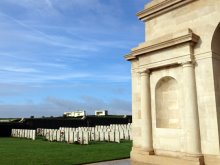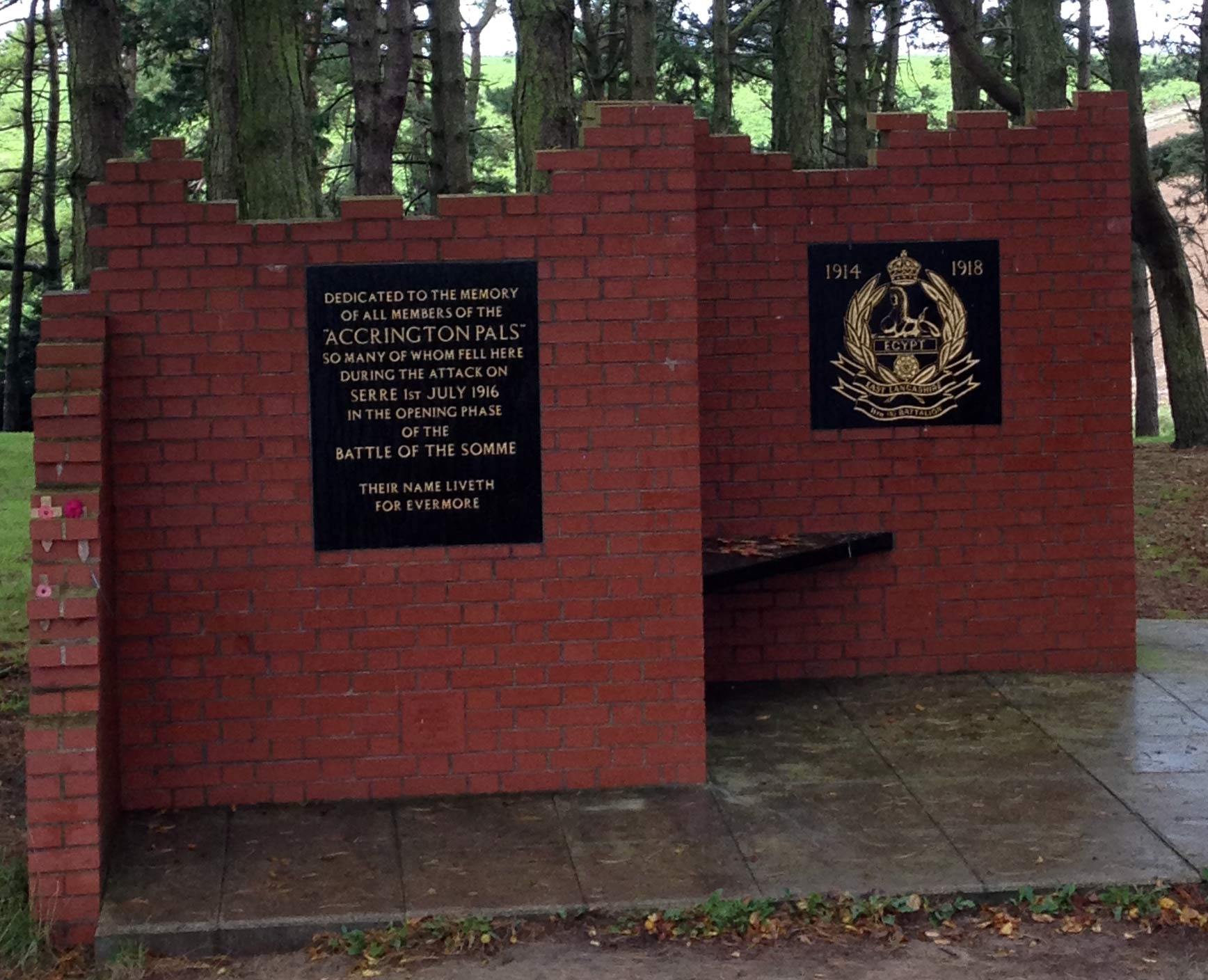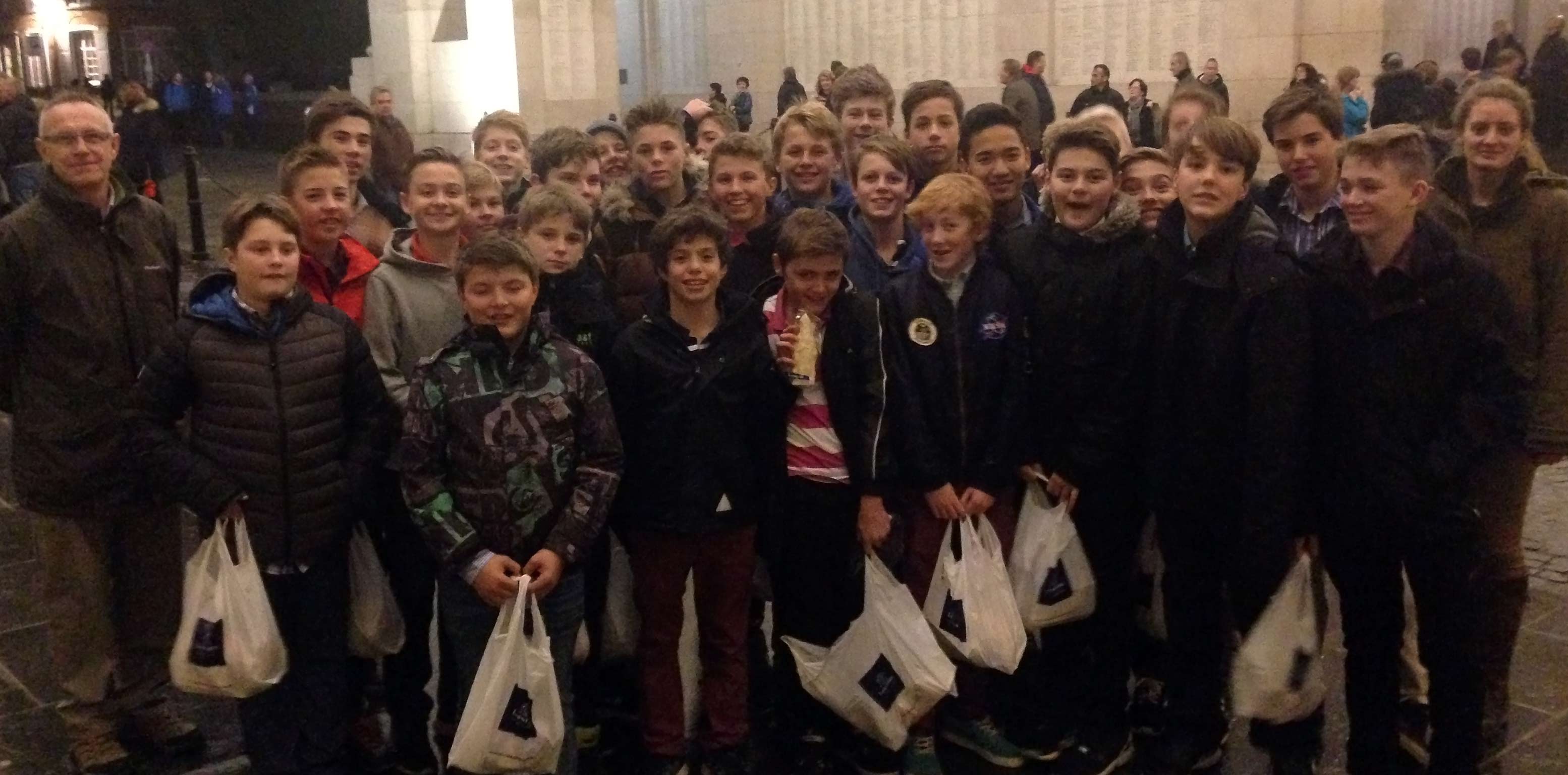
During the October half term, 30 Year 9 historians accompanied by Head of History Mrs Catherine Munro, Assistant Head Mr Paul Jones and Deputy Head Pastoral Mr Nick Brown, made it across the channel to the Belgian and French battlefields, for a memorable three day trip. Former teacher and renowned historic author Mr Jon Cooksey acted as tour guide for the trip, imparting knowledge of the great wars, as well as trench warfare and battle tactics at each historic site. Jon has made appearances on television and radio, and the College is lucky to welcome him back for this most poignant trip. The History Department is focusing on World War I during lessons this term, and it was a chance to see the scale and devastation that the war left behind.
 Heading over by boat, and then piling onto a coach for the journey to the battlefields, the boys were making the same trip that young soldiers made just over a hundred years ago. The pupils are just a few years younger than some of the troops making the trip to fight for their country - a sobering fact that resonated with the historians.
Heading over by boat, and then piling onto a coach for the journey to the battlefields, the boys were making the same trip that young soldiers made just over a hundred years ago. The pupils are just a few years younger than some of the troops making the trip to fight for their country - a sobering fact that resonated with the historians.
Although it was a short trip, a lot was packed into it. The group went on a highly emotive visit to the Last Post at the Menin Gate, where a moving ceremony to the missing has taken place every night since 1922 at 8.00pm - interrupted only by World War II. The boys also learned about the significance of the Ypres Salient and technology during the war, and were told emotive and exciting stories of the battlefields of 1915. Visiting the sites where fighting took place was crucial in aiding the boys' understanding of the scale of war; taking a step back from the classroom emphasised the reality of the troops' experiences, and the scale of loss from all sides.
On visiting Tyne Cot cemetery, pupil Zak Tilley managed to find two of his relatives’ names after having done some family research before the trip. And he was not the only one who found family history during the trip; the group also visited a memorial to Mr Jones’ great uncle at Zantvoorde, a Grenadier Guard who fell in 1914.
The historians then crossed the border to France to visit sights. The boys learnt about the PALS battalion of Accrington, and were able to visit some preserved trenches at Beaumont Hamel. Walking through the trenches and staring out across the fields were so much blood was shed, the young historians felt very moved by the experience.
 The group found a visit to the Lochnagar Crater particularly moving, as Mr Cooksey explained about mine warfare in the conflict. He also pointed out a plaque to war hero Edith Cavell, a British nurse condemned to death for helping British and allied soldiers escape from German-occupied Belgium.
The group found a visit to the Lochnagar Crater particularly moving, as Mr Cooksey explained about mine warfare in the conflict. He also pointed out a plaque to war hero Edith Cavell, a British nurse condemned to death for helping British and allied soldiers escape from German-occupied Belgium.
The final day of the trip saw the group visit a brand new memorial: The Ring of Remembrance at Notre Dame le Lorette, which contains all 579,606 names of all who were slaughtered at Nord-Pas-de-Calais during the Great War. No distinction is made between nationality or rank on the memorial, and Mrs Munro commented that ‘it was fascinating to see British, German, Chinese and Polish names together on the same memorial.’
Perhaps the most memorable part of the trip was visiting the grave of Cecil Harrison, who lived in Skipwith House before the war broke out. Mr Cooksey had researched his story in the war, and suggested that the group’s visit to his grave was a Shiplake first. The Skipwith boys felt particularly proud and moved by the visit.
The boys also wrote poetry, exploring the experiences of those who had fought 100 years ago, and creating memories for themselves now. The trip proved a powerful and important one for the historians, who remain grateful to Mrs Munro for organising it, and to Mr Brown and Mr Jones for accompanying them.






















